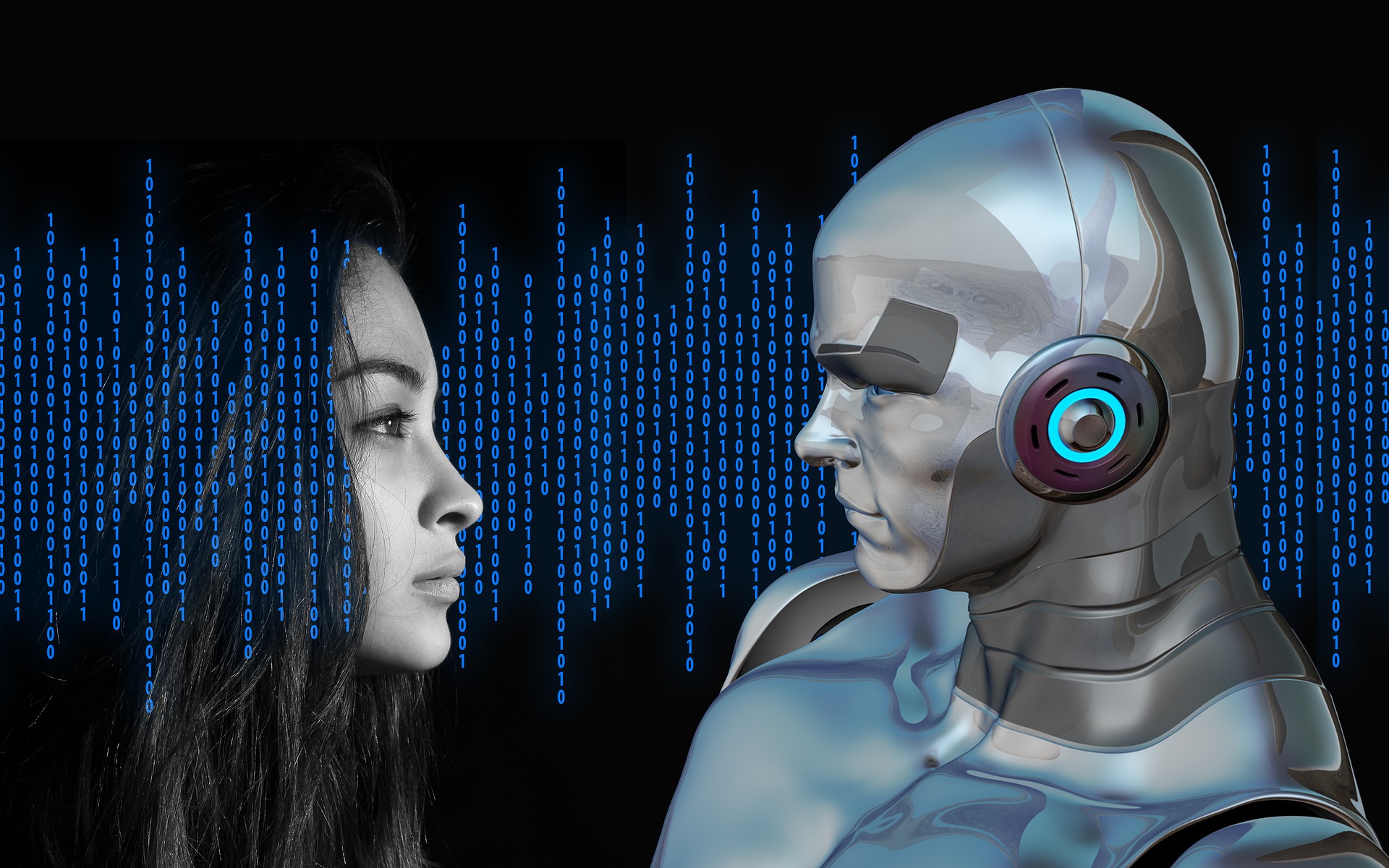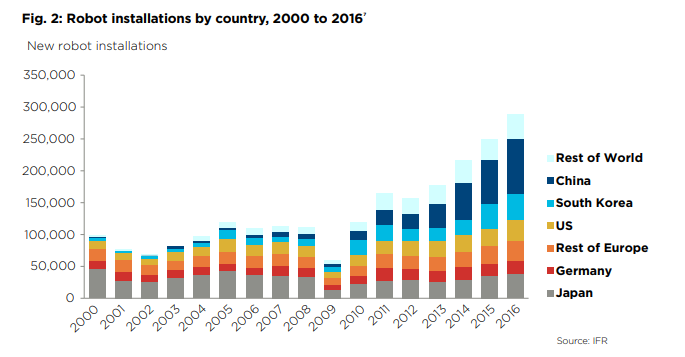Robots are likely to give humans more skilled tasks

More and more robots are integrating into different spheres of our life. They work alongside people or completely replace them. For example, Amazon uses robots to stockpile and pack items. Tesla Motors boasts robotic and automatic conveyor lines for its electric cars and batteries. The works are even used in therapy sessions for children. However, there is no unambiguous assessment of the impact of robots on the economy.
Some economists point out that they stimulate productivity growth. It leads to higher wages and lower prices for goods and services. This means that the standard of human life is increasing.
In addition, an increase in labor productivity stimulates the growth of the gross domestic product (GDP). Georg Graz of Uppsala University and Guy Michaels of the London School of Economics published Work at Work in 2018, which examined the impact of machines on the economy. Their research focuses on the United States and 16 other countries between 1992 and 2007. Graz and Michaels found that increased use of industrial robots raised annual GDP growth by 0.36% on average. This is a significant increase, comparable to that which occurred at the turn of the twentieth century thanks to steam technology.

Most robots are in China.
However, economists also fear that the deployment of automation could lead to an increase in unemployment. Thus, analysts from Oxford Economics argue that robots can take over 20 million manufacturing jobs worldwide by 2030. They found that the number of robots has tripled to 2.25 million over the past two decades. In this regard, experts make a pessimistic forecast.
But despite the risks, they urge lawmakers not to oppose the rise in automation.
Works are more friends than competitors
Some experts are more optimistic about the impact of robots on the labor market. They believe that robots, by taking on automated tasks (such as sorting, transporting, rapid dyeing), are replacing low-skilled workers, while creating high-paying jobs for people. The latter will shift to roles that require critical and creative thinking, collaboration, and empathy.
Most likely, artificial intelligence (AI) machines will take over the following activities:
FANUC industrial robots at the AUDI car plant.
However, people have already learned how to react to the appearance of competing robots for the workplace. And this experience, as it turned out, was not painful. Thus, Wolfgang Daut, Sebastian Findaisen, Jens Suedekum, Nicole Vossner analyzed how workers and firms in Germany reacted to the increase in automation between 1994 and 2014. They found that workers whose task sets were automated moved on to new professions and tasks in the same workplace. Evidence suggests that continuing education has proceeded in parallel with these transitions.
Amar Ganspahl, CEO of Bright Machines, notes that spreadsheets and accounting software have revolutionized the way accountants work, but have not destroyed the profession as such.
Both accountants and cashiers began to do more complex work, Hanspal continued. Thus, accountants began to spend less time on numbers and more on building relationships with customers.

More and more robots are integrating into different spheres of our life. They work alongside people or completely replace them. For example, Amazon uses robots to stockpile and pack items. Tesla Motors boasts robotic and automatic conveyor lines for its electric cars and batteries. The works are even used in therapy sessions for children. However, there is no unambiguous assessment of the impact of robots on the economy.
Some economists point out that they stimulate productivity growth. It leads to higher wages and lower prices for goods and services. This means that the standard of human life is increasing.
In addition, an increase in labor productivity stimulates the growth of the gross domestic product (GDP). Georg Graz of Uppsala University and Guy Michaels of the London School of Economics published Work at Work in 2018, which examined the impact of machines on the economy. Their research focuses on the United States and 16 other countries between 1992 and 2007. Graz and Michaels found that increased use of industrial robots raised annual GDP growth by 0.36% on average. This is a significant increase, comparable to that which occurred at the turn of the twentieth century thanks to steam technology.

Most robots are in China.
However, economists also fear that the deployment of automation could lead to an increase in unemployment. Thus, analysts from Oxford Economics argue that robots can take over 20 million manufacturing jobs worldwide by 2030. They found that the number of robots has tripled to 2.25 million over the past two decades. In this regard, experts make a pessimistic forecast.
“Tens of millions of jobs will be lost as a result of robotization, especially in poor local economies that rely on low-skilled workers. This will lead to an increase in income inequality, "- said the study authors.
But despite the risks, they urge lawmakers not to oppose the rise in automation.
“The challenge should be to distribute the dividends from robotics more evenly, helping vulnerable workers prepare and adapt to the cataclysm,” the researchers said.
Works are more friends than competitors
Some experts are more optimistic about the impact of robots on the labor market. They believe that robots, by taking on automated tasks (such as sorting, transporting, rapid dyeing), are replacing low-skilled workers, while creating high-paying jobs for people. The latter will shift to roles that require critical and creative thinking, collaboration, and empathy.
Most likely, artificial intelligence (AI) machines will take over the following activities:
- Customer Service
They do not require high levels of social or emotional intelligence. Already, many companies are commissioning AI to answer frequently asked questions from customers. - Accounting and data entry Data
entry and routine tasks in accounting have already begun to be automated. - Administrators
With the option of automatic check-in in hotels, the need for administrators will decrease. In addition, nowadays in fast food places people can place orders through communication screens. - Proofreading The
detection of grammatical errors, the construction of sentences can be easily automated using various programs. For example, Grammarly is used by professionals today. - Manufacturing and pharmaceutical work
In pharmaceutical laboratories, robots can collaborate with scientists to improve the safety of the environment so that personnel do not put their lives at risk. - Courier Services
AI has brought many social and economic changes to the shipping industry. He streamlined the various functions of the logistics and supply chain. However, drones and robots are already taking on courier tasks. - Doctors
Today, including in Ukraine, robotic surgeons perform critical operations that require greater precision of movements. - Battlefield soldiers in the future will be robots that can take orders without constant supervision. They are now used in military operations for surveillance or reconnaissance.
- AI guards have made significant strides in physical security. For example, a Yelp robot can inspect a building with a high-definition camera. It is also equipped with a microphone and infrared sensor to detect any suspicious activity. There is an 84% chance that AI will fully automate this sector.
FANUC industrial robots at the AUDI car plant.
However, people have already learned how to react to the appearance of competing robots for the workplace. And this experience, as it turned out, was not painful. Thus, Wolfgang Daut, Sebastian Findaisen, Jens Suedekum, Nicole Vossner analyzed how workers and firms in Germany reacted to the increase in automation between 1994 and 2014. They found that workers whose task sets were automated moved on to new professions and tasks in the same workplace. Evidence suggests that continuing education has proceeded in parallel with these transitions.
Amar Ganspahl, CEO of Bright Machines, notes that spreadsheets and accounting software have revolutionized the way accountants work, but have not destroyed the profession as such.
“If you have an ATM, you think that you obviously do not need a cashier. It turns out that this is not true. In 1970 there were about 250,000 bank tellers. The first automatic cash register was recently introduced. By 2019, about 400,000 ATMs were installed in the United States, and the number of bank tellers doubled, "he said.
Both accountants and cashiers began to do more complex work, Hanspal continued. Thus, accountants began to spend less time on numbers and more on building relationships with customers.
“With automation, there will be a significant net increase in jobs, and about two-thirds of jobs transformed by automation will become more skilled,” he sums up.
